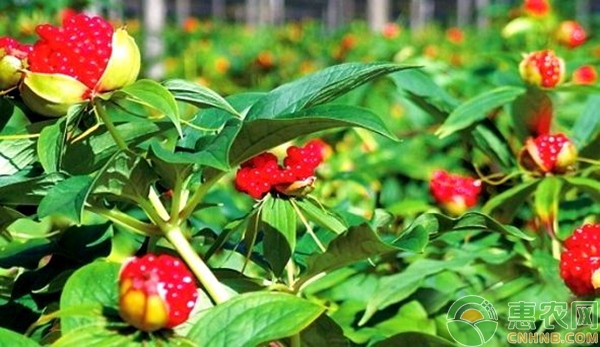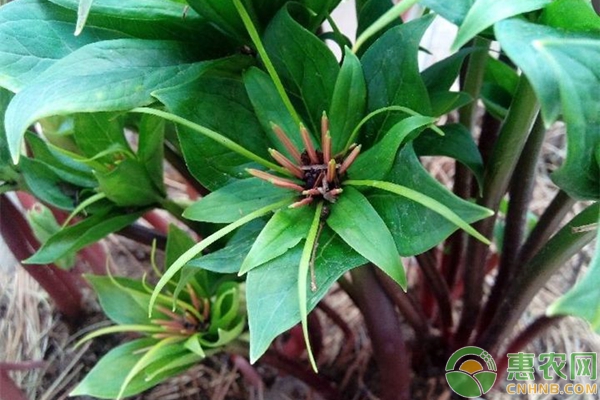The heavy building is a plant with medicinal value, and its economic value has been continuously reflected in recent years. Many areas have been lifted out of poverty due to the planting of heavy buildings. So, can Yunnan plant a heavy building? Let's take a look at the cultivation techniques of the heavy building in Gongshan County, Nujiang Prefecture, Yunnan Province.
The development of artificial heavy building in Gongshan County began in 2011. Due to the late start, the technology is not very mature. By the end of 2017, the planting area of ​​Gongshan County has reached about 203 hm2. Through the years of planting experience and reference to relevant materials, the actual situation of Gongshan County has been combined. Suggestions for artificial planting of heavy buildings were put forward to further promote the development of the heavy building industry in Gongshan County.

1.1 Heavy seed seed breeding
1) The seeds of the heavy building are generally mature from September to November. When the fruit is cracked, the peel is light yellow and the outer heavy skin is dark red, indicating that the seed is fully mature and can be harvested. At this time, the seed has the highest germination rate. Seeds should be exposed to direct sunlight and stored in a cool, ventilated place. If the water content of the seed is too low, the seed may have reduced germination ability due to excessive water loss.
2) Breeding site selection. The heavy building likes a warm, humid and shaded environment. Therefore, the breeding base generally chooses the front and rear of the house or the semi-yang area on the north slope of the mountain, and the drainage performance is good and there is more humus and looser sandy loam. A shade can be built there to facilitate daily management.
3) For the preparation of the nursery land, the sorghum should be built to facilitate drainage. The height of the raft is 15 cm and the width is 120 cm. The length of the raft is determined according to the topography. The humus or fluvo-a soil under the forest is used as the soil for the nursery base of the heavy building. Scrape flat with a straight plank and place the drug in the ground, then cover the 2 cm soil layer and scrape again to sow.
4) Seed pre-treatment. The seeds are soaked in water for 12 h, allowing them to fully absorb the water and then sterilizing them for seeding.
1.2 Sowing
The ratio of the treated heavy seed and fine sand is 1:3, and it is evenly spread on the surface of the loquat. The distance between the seed and the seed is 1 to 2 cm, the diameter of the seed is generally 1 to 3 mm, and the soil needs to be covered by 1 to 1.5 cm. Then cover the 10 cm pine needle, the main role of the soil pine needle to avoid weed growth and moisturizing. After the seed cover soil is completed, it is sprayed in the form of spraying. It is best to infiltrate the soil to 5~10 cm, and it can also be covered with black plastic film. Maintain soil moisture.

1.3 Field management
There are some substances in the seeds of the ruthenium that inhibit germination. This is an incomplete development of the embryo and the late stage of the physiology. Therefore, it is necessary to experience the "two winters and one summer" to emerge, and it takes a long time from sowing to emergence. During the period, good field management plays a more important role. In order to ensure the seedling emergence rate of heavy buildings, the general sowing time is in October, and the radicle germination occurs in May-November of the following year, and the second year will be February-March. It takes 14 months to produce seedlings. During this period, we need to do the weed cleaning in the field and prevent pests and diseases. Every 15 days, watering should be done once to ensure the moistness of the soil. In July-August, attention should be paid to drainage to prevent the radicle from appearing. It is best not to fertilize the seedlings before they are unearthed. Organic fertilizer, sprayed after application, to prevent organic fertilizer from touching the seedlings and causing damage to the seedlings.
1.4 transplanting seedlings
The seedlings of the heavy building are generally cultivated after 2 to 3 years, and after the roots reach 10 g, they are planted in December or transplanted with soil from May to July. In transplanting, it is necessary to pay attention to the protection of the seedlings of the heavy building. If transplanted at other times, it may cause problems of low survival rate or poor development after emergence. For the root reproduction of the heavy building, the following aspects should be noted.
(1) Breeding with buds with top buds. This method is generally used in small-area bases. After rooting in winter, the root system is excavated, and the roots with no damage and no pests and diseases are selected. The roots of the top buds are cut at 3 to 4 cm, and the wounds are covered with ash, according to Daejeon. Plants were planted at a size of 15 cm × 15 cm. After the second year, you can emerge in the spring.
(2) No bud propagation. This method is generally used in a base for mass reproduction of seedlings. In the root system of the top bud, the roots with no pests and diseases are selected, one for each two sections, and the incision is in the middle of the adjacent two sections. The dicing should be immersed in 50% carbendazim 300 times solution for 30 min, planted with 10 mc × 10 cm plant spacing after planting ash, and then covered with soil 3 cm to keep the surface moist. This method can not be grown in the same year. It can only be emerged in April of the second year, and after being cultivated for one year, it is transplanted into the field.

(3) transplanting. Before the seedlings are germinated, the plant spacing is 15 cm × 15 cm, and about 1,000 plants can be planted per 667 m2. After transplanting, the root water is poured to maintain the integrity of the seedlings and the rationality of the density. Heavy buildings generally need to be in a cool place, avoid direct sunlight, generally in the growth period, the transparency is kept at 40% to 50%. Therefore, after emergence or transplanting, it is necessary to use shading measures. In places where conditions permit, you can use a shade net or a method of cutting branches. It is also possible to interplant corn and use corn to shade.
(4) cultivating and weeding. Heavy buildings require loose soil, and the aboveground part generally has a weak growth. Therefore, it is necessary to pay attention to weeding and weeding, and timely drainage and weeding.
(5) Topdressing and cultivating soil. Heavy buildings are generally topdressed in June, with a topdressing of 2,000 to 3,000 kg per 667 m2 and a calcium content of 20 to 30 kg. During the vigorous growth period, 0.5% urea was used for top dressing.
Blackout greenhouse ,Light dep greenhouse ,Auto light deprivation greenhouse,Blackout green house,film greenhouse
JIANGSU SKYPLAN GREENHOUSE TECHNOLOGY CO.,LTD , https://www.spgreenhouse.com